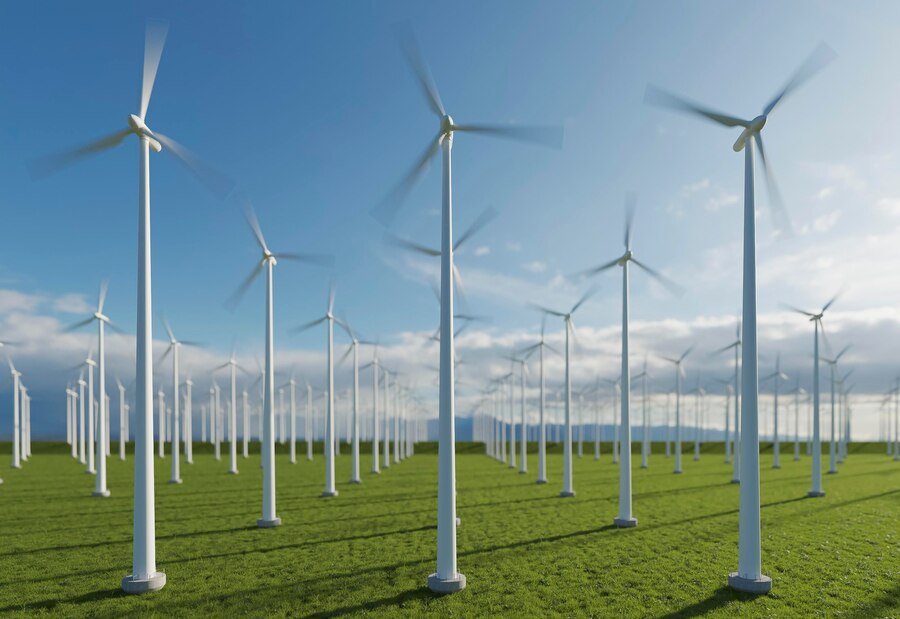In today’s ever-evolving world, the pursuit of sustainable energy solutions has become paramount. Concerns over environmental poverty and finite fossil fuel reserves continue to mount. The quest for alternative energy sources has intensified. One such promising avenue is producing free electricity through harnessing renewable resources. In this comprehensive guide, we delve into the various methods and technologies available for generating electricity without incurring ongoing costs.
Solar Power: A Beacon of Clean Energy
At the forefront of the renewable energy revolution stands solar power. Utilizing photovoltaic (PV) panels, sunlight is converted into electricity through the photovoltaic effect. This abundant and inexhaustible energy source offers a multitude of benefits, including reduced carbon emissions. Lower energy bills and minimal maintenance requirements. By strategically positioning solar panels to capture maximum sunlight, individuals and businesses alike can generate free electricity. While significantly reducing their carbon footprint.
Wind Energy: Tapping into Nature’s Gusts
Another free electricity solution lies in harnessing the power of the wind. Wind turbines, whether small-scale for residential use or large-scale for commercial applications. Transform kinetic energy from wind into electrical power through the rotation of turbine blades. With technological advancements enhancing efficiency and reliability. Wind energy has emerged as a viable and sustainable alternative to conventional electricity generation methods. By capitalizing on favorable wind conditions, communities can establish wind farms to produce free electricity and promote energy independence.

Hydropower: Leveraging the Flow of Water
Hydropower represents yet another street for free electricity generation, tapping into the kinetic energy of flowing water to produce electricity. Whether through traditional hydroelectric dams or innovative run-of-river systems, the potential for harnessing hydropower is vast. By strategically locating hydropower facilities near rivers or streams, communities can capitalize on this abundant and renewable energy source to generate free electricity while minimizing environmental impact.
Biomass Energy: Transforming Waste into Power
Biomass energy offers a unique approach to producing free electricity by utilizing organic materials such as agricultural residues. Wood chips, and municipal solid waste generate heat and electricity through combustion or biochemical processes. By repurposing waste products that would otherwise contribute to landfill pollution, biomass power plants not only generate free electricity but also contribute to waste management and resource conservation efforts.
Geothermal Energy: Tapping into Earth’s Heat
Geothermal energy harnesses the Earth’s natural heat to produce free electricity through geothermal power plants or geothermal heat pumps. By drilling deep into the Earth’s crust to access hot water or steam reservoirs, geothermal facilities can generate electricity with minimal environmental impact and high efficiency. This renewable energy source is particularly advantageous in regions with abundant geothermal resources, offering a reliable and sustainable solution for free electricity generation.
Advancements in Energy Storage Technologies
In addition to free electricity generation methods, significant strides have been made in energy storage technologies. Battery storage systems, such as lithium-ion batteries, offer a scalable solution for storing surplus energy from solar, wind, and other renewable sources. By coupling free electricity generation with efficient energy storage, individuals and communities can optimize their energy usage, reduce reliance on the grid, and enhance energy resilience.

Microgrid Integration for Energy Independence
Microgrids represent a decentralized approach to energy distribution and management, enabling communities to produce free electricity locally and independently from the main power grid. By integrating renewable energy sources, energy storage systems, and smart grid technologies, microgrids can seamlessly balance supply and demand, enhance grid stability, and even facilitate peer-to-peer energy trading among users. This self-sustaining model not only ensures reliable access to free electricity but also fosters resilience in the face of natural disasters, grid outages, and other disruptions.
Policy Support and Incentives for Renewable Energy Adoption
The widespread adoption of free electricity generation technologies is further catalyzed by supportive policies and incentives at the local, national, and international levels. Governments around the world are implementing renewable energy targets, feed-in tariffs, tax credits, and other financial incentives to encourage the deployment of solar, wind, and other clean energy technologies. Additionally, regulatory reforms aimed at streamlining permitting processes, reducing bureaucratic hurdles, and fostering innovation are paving the way for accelerated free electricity adoption and deployment.
Public Awareness and Education Initiatives
Education and outreach play a pivotal role in promoting the benefits and feasibility of free electricity generation. Public awareness campaigns, community workshops, and educational initiatives help dispel myths, address misconceptions, and empower individuals to make informed decisions about renewable energy adoption. By highlighting success stories, showcasing technological advancements, and providing practical guidance on installation and financing options, these initiatives foster a culture of sustainability and inspire collective action towards a free electricity future.
Collaborative Partnerships for Technological Innovation
Collaborative partnerships between government agencies, research institutions, industry stakeholders, and non-profit organizations drive technological innovation and accelerate the development of free electricity solutions. By fostering open dialogue, sharing best practices, and pooling resources.

These partnerships facilitate the co-creation of cutting-edge technologies, standards, and policies that advance the free electricity agenda. From research and development initiatives to pilot projects and demonstration sites. Collaborative efforts are instrumental in overcoming barriers and unlocking the full potential of renewable energy resources.
Conclusion: Empowering a Sustainable Energy Future
In conclusion, the transition to free electricity is not only feasible but imperative in addressing it. The dual challenges of climate change and energy security. By harnessing the power of renewable energy sources, embracing energy storage innovations, leveraging microgrid solutions, and implementing supportive policies. By fostering public awareness, and fostering collaborative partnerships. We can pave the way for a cleaner, more resilient, and more sustainable energy future. Together, let us seize the opportunity to produce free electricity and create a brighter tomorrow for generations to come.






